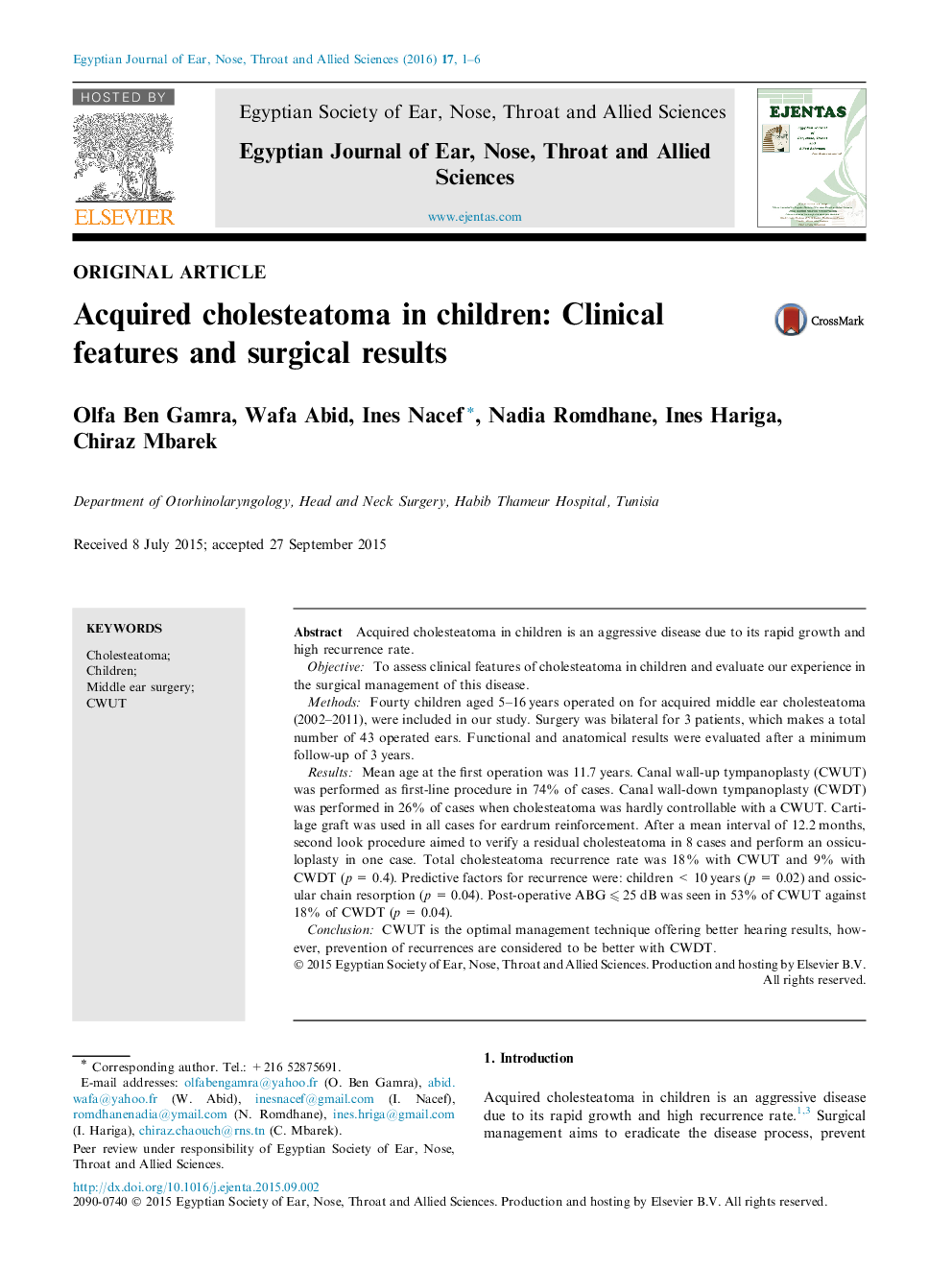| Article ID | Journal | Published Year | Pages | File Type |
|---|---|---|---|---|
| 4108818 | Egyptian Journal of Ear, Nose, Throat and Allied Sciences | 2016 | 6 Pages |
Acquired cholesteatoma in children is an aggressive disease due to its rapid growth and high recurrence rate.ObjectiveTo assess clinical features of cholesteatoma in children and evaluate our experience in the surgical management of this disease.MethodsFourty children aged 5–16 years operated on for acquired middle ear cholesteatoma (2002–2011), were included in our study. Surgery was bilateral for 3 patients, which makes a total number of 43 operated ears. Functional and anatomical results were evaluated after a minimum follow-up of 3 years.ResultsMean age at the first operation was 11.7 years. Canal wall-up tympanoplasty (CWUT) was performed as first-line procedure in 74% of cases. Canal wall-down tympanoplasty (CWDT) was performed in 26% of cases when cholesteatoma was hardly controllable with a CWUT. Cartilage graft was used in all cases for eardrum reinforcement. After a mean interval of 12.2 months, second look procedure aimed to verify a residual cholesteatoma in 8 cases and perform an ossiculoplasty in one case. Total cholesteatoma recurrence rate was 18% with CWUT and 9% with CWDT (p = 0.4). Predictive factors for recurrence were: children < 10 years (p = 0.02) and ossicular chain resorption (p = 0.04). Post-operative ABG ⩽ 25 dB was seen in 53% of CWUT against 18% of CWDT (p = 0.04).ConclusionCWUT is the optimal management technique offering better hearing results, however, prevention of recurrences are considered to be better with CWDT.
